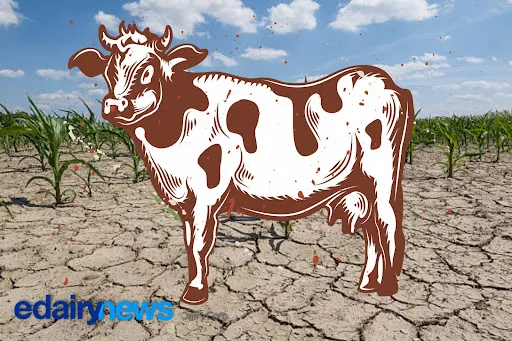
Drought conditions, Niña announced to us as early as 2021, intensified in southern Brazil, as well as in Uruguay, Chile and Argentina in late 2022 and early 2023, raising costs and reducing milk production in the region.
In the industry, the decrease in product supply is due to lower milk intake from farms.
Exports also began to slow down, mainly from Argentina and Uruguay, which with prices 20% above the GDT for sales abroad, it is very difficult for them to place products outside Mercosur.
Dairy consumption is also falling due to factors that influence trade: the rise in interest rates and the slowdown of the Asian tigers.
Brazilian dairy farmers benefited from higher farmgate milk prices in January. However, milk prices are already showing signs of decline in Brazil as consumption there also weakens.
Slowing economic activity due to persistently high inflation and the government’s worsening fiscal balance are already translating into higher unemployment and less purchasing power for Brazilian consumers.

Brazil is increasing concentration, and despite having one of the highest margins on the price paid for milk in Latin America, it continues to have stagnant extraction volumes, as do its Mercosur neighbors.
A survey by Embrapa Livestock Dairy presented at a meeting of the Dairy Alliance and discussed by the industries of Rio Grande do Sul on Tuesday (28/03) indicates that the price per liter in Brazil in 2022 is US$ 0.56, well above the value practiced in Uruguay (US$ 0.42), Argentina (US$ 0.37) and Chile (US$ 0.44).
Heat stress conditioned milk, fat and protein production, deteriorated reproductive parameters, causing abortions and reabsorptions and conditioned the response of the immune system and general health of the herd, as we could see in a report by Argentine experts such as Miguel Taverna and Laura Gastaldi.
In addition to the problems caused by high temperatures, the lack of water spoiled crops and pastures. There is nothing to feed the animals.
But there is no evil that lasts a hundred years, nor a field that can withstand it: the water did not disappear, it just fell in different places. According to forecasts, in 2023 it will rain much more than average in our region, and much less where it rained a lot in 2022.
Let us also remember:
1) Flood damages are a consequence of the State stealing the money destined for drainage works.
2) Economic damage from drought is also a consequence of the state stealing all the profitability from businesses.
– Bumper Crop (@BumperCrop1) April 2, 2023
https://platform.twitter.com/widgets.js
Intense child forecast: VERY. With effects only comparable to the events of 2016. And then there will also be the global conjuncture and political decisions (or lack thereof) in the region to contend with.























